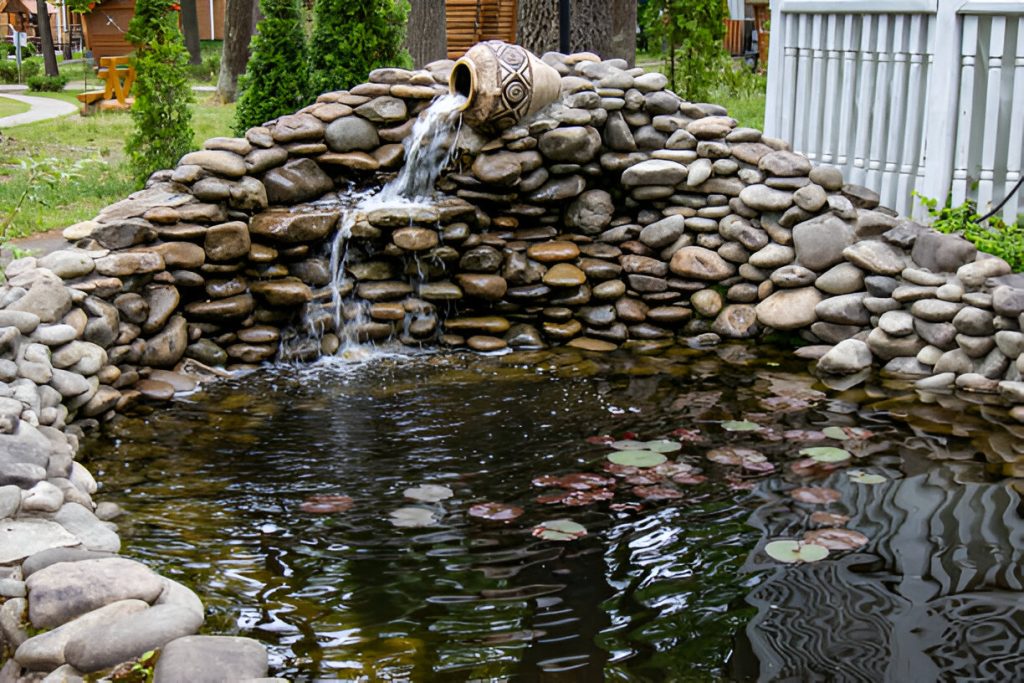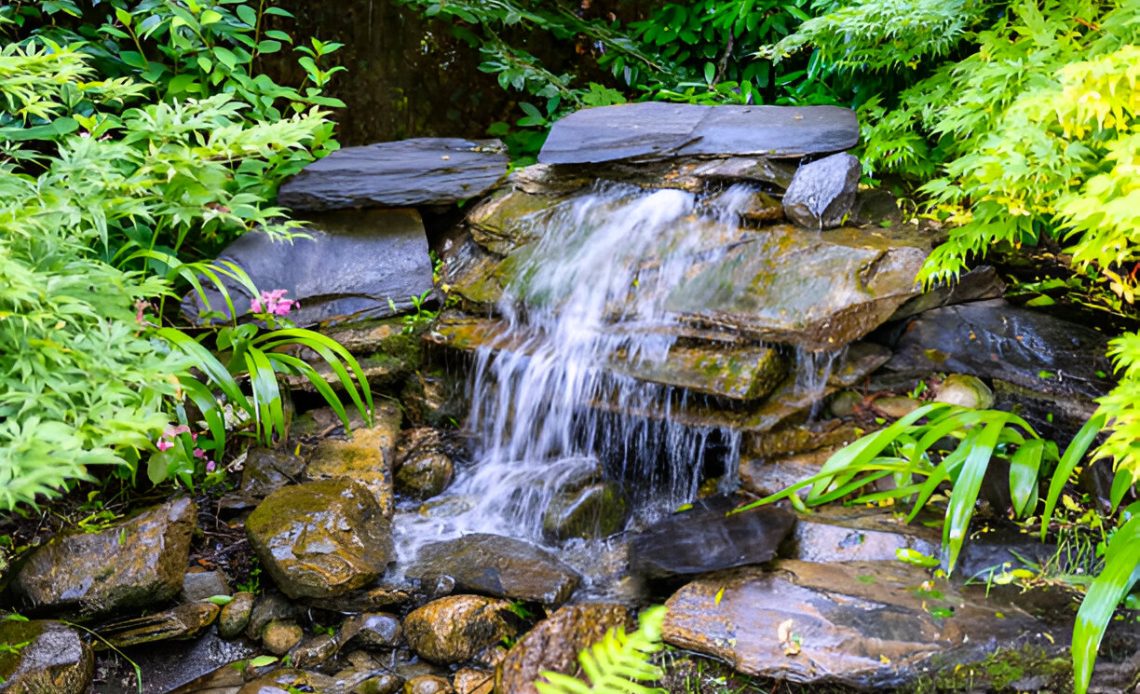Water features are a stunning and calming addition to any outdoor (or even indoor) space—but have you ever wondered how they actually work?
Whether it is a gentle bubbling sphere, a trickling cascade, or a dramatic lake fountain, they all rely on the same basic principle: water movement. Most features use a pump to push water upwards, often against gravity, before it flows back down to a reservoir, repeating the cycle over and over.
At That Pond Guy, they are experts in water features, fountains, and pond systems. They are here to make garden enhancements as simple and beautiful as they should be—whether you are adding a new water feature or upgrading an old one.
The Key Components Behind Every Water Feature
The foundation of any water-creating feature is a reservoir since it serves as a storage facility for water between motions. It can be built into the feature or purchased separately for setups that recirculate water.
The water is pumped up from this reservoir and allowed to flow back down naturally with the help of gravity, creating the calming sights and sounds we love.
Every water feature needs electric pumps to generate sufficient power for water movement. Rates of pumps are determined according to their ability to handle litres per hour (LPH) and they may exist as either submersible (wet) designs or external (dry) designs. The larger the feature, the more powerful the pump needed.
Electricity vs. Solar Power
Water features are usually powered by mains electricity or solar panels. Solar water features come with a small solar panel that captures sunlight to generate power for the pump.
Baths are perfect options for occupants focused on environmental responsibility or people who need fast and cordless setup systems. Large lake fountains typically need main electricity power since their energy needs exceed what solar or battery systems can provide.
Solar-powered water features exist with built-in battery systems that allow continuous operation during solar periods and also during periods of low sunlight.

Indoor and Bubble Features
Indoor water features follow the same principles—relying on a reservoir and pump—but are often smaller and designed for indoor-safe materials.
Bubble water features, however, work slightly differently. Instead of pushing water, they push air through the system, which creates that bubbly, fizzy appearance often seen in wall-mounted or column-style features.
Should You Run Your Feature All the Time?
Your water feature’s operation status matters in terms of use but continuous running produces positive effects on your system. Running a water feature with a pump will help protect water quality yet prevent algae growth combined with removing mineral precipitation and prolonging pump life.
Feature owners should protect their devices from frost by covering or storing them during wintertime.
Final Thoughts
Water features in your garden serve as far more than decorative elements because they create auditory elements and fluid motion as well as a supernatural atmosphere.
Learning about these systems leads to the successful operation of your pond water features for extended periods regardless of which design you choose. At That Pond Guy you can easily create a personal oasis with their assistance.

